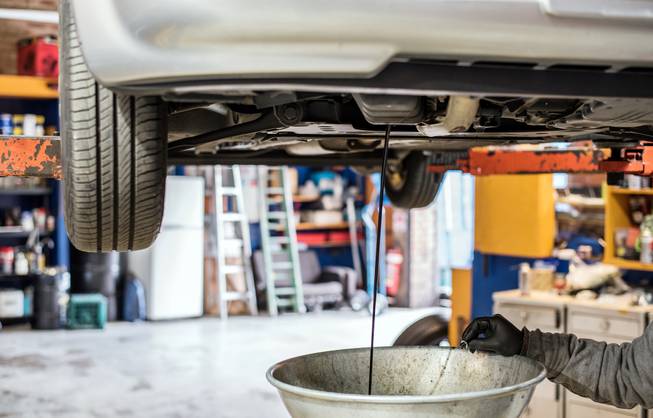
Shutterstock.com
Sunday, Jan. 21, 2018 | 2 a.m.
Pro tip
When washing your car, clean the interior first to avoid dust and dirt sticking to the exterior.
Like human bodies, vehicles need regular checkups and maintenance. Preventive care can minimize potential issues and save you thousands of dollars on future repairs. Here are a few things to keep an eye on.
Check frequently
• Tire inflation: Don’t inflate tires to the pressure specified on the tire’s sidewall. Instead, use the automaker’s recommended pressure, which typically is found on a sticker on the vehicle’s doorjamb.
Check tread depth by placing a penny head-down in the tire tread groove. If the tread doesn’t cover the top of Lincoln’s head, it’s time to replace your tires.
• Also: Dashboard indicator lights, lights, windshield washer fluid, engine oil level
MYTH: Change the oil every 3,000 miles. While many service shops post stickers reminding you to change your vehicle’s oil every 3,000 miles, this may not apply. Under normal driving conditions, most vehicles are designed to go 7,500 miles or more between oil changes. More frequent oil changes won’t hurt your vehicle, but they can get pricey. Check your owner’s manual for recommended time frames.
Every 3 months or 3,000 miles
• Automatic transmission fluid, battery and cables, belts, engine air filter, engine oil, exhaust, hoses, power steering fluid
MYTH: Change the air filter with every oil change. Not necessary. Air filters typically can be blown clean with compressed air and last through many oil changes. Replace it if you start to notice trouble with acceleration or feel that the air filter has become brittle.
Every 6 months or 6,000 miles
• Rotate your vehicle’s tires. That will help to ensure that all of the tires wear evenly and will help them last longer.
• Also check: Chassis lubrication, fuel filter, wiper blades
MYTH: Service and repairs must be done at a dealership to keep a vehicle warranty in tact. It’s true that slacking on maintenance and service can void a warranty. But there are no rules that dictate who does the work. Service and repairs can be done anywhere and by anyone — even yourself. Just be sure to keep receipts.
Every 12 months or 12,000 miles
• Brakes, cabin air filter, coolant (antifreeze), steering and suspension, wheel alignment
When is it likely to fail?
Pro tip
Premium gasoline isn’t always better — some vehicles do need higher-octane fuel, typically those with hotter-running, high-compression, high-performance engines. But most perform well with regular-grade, 87-octane gas.
These are the general lifespans of vehicle parts:
• 30,000 miles: air filter, copper spark plugs
• 40,000 miles: serpentine belt
• 45,000 miles: tires
• 50,000 miles: brake pads, accessory drive belt
• 60,000 miles: timing belt
• 75,000 miles: coolant hoses
• 100,000 miles:iridium spark plugs
